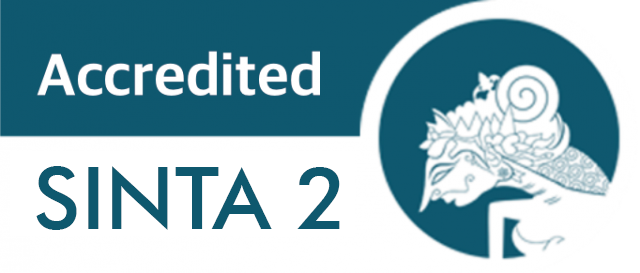Optimising the Mathematical Creative Thinking Process of Deporter's Learning Style Assisted E- Module Strukbar Based on Case Method
DOI:
https://doi.org/10.18326/hipotenusa.v7i1.3915Keywords:
mathematical creative thinking, prospective teachers, case method, strukbar e-module, deporter learning styleAbstract
The purpose of this research is (1) to identify the patterns of mathematical creative thinking processes based on DePorter's learning styles, and (2) to determine the improvement in mathematical creative abilities through learning assisted by the Strukbar E-module based on the Case Method. This research uses the Mixed Method with a Sequential Exploratory type. The research subjects are third-semester students of the 2024/2025 academic year in the Mathematics Education Study Program at STKIP Gotong Royong Masohi, Central Maluku, who are taking the Algebra Structure 1 course. In the qualitative research, the subjects consisted of three prospective teachers with DePorter's learning styles, while the quantitative research involved 26 participants. Data collection techniques include tests, DePorter learning style questionnaires, interviews, and documentation of prospective teachers' work. The research results show that DePorter's Visual, Auditory, and Kinesthetic learning styles each have their own advantages at the stages of mathematical creative thinking, from orientation, preparation, incubation, illumination, to verification. Moreover, the implementation of the Strukbar E-module based on the Case Method has been proven to significantly enhance the mathematical creative abilities of prospective teachers. These findings underscore the importance of teaching methods that align with individual learning styles and the use of digital technology in education.
References
El-Bishouty, Moushir M., Ahmed Aldraiweesh, Uthman Alturki, Richard Tortorella, Junfeng Yang, Ting-Wen Chang, and Sabine Graf. 2019. “Use of Felder and Silverman Learning Style Model for Online Course Design.” Educational Technology Research and Development 67(1):161–77.
Gallian, Joseph. 2021. Contemporary Abstract Algebra. Chapman and Hall/CRC.
Hidayah, Isti, and Mohammad Asikin. 2021. “Quality Management of Mathematics Manipulative Products to Support Students’ Higher Order Thinking Skills.” International Journal of Instruction 14(1):537–54. doi:10.3991/ijim.v15i22.24797
Isnarto. 2021. Teori Grup. Pertama. Semarang: Qahar Publisher.
Misechko, О., and T. Lytniova. 2022. “From Critical Thinking–To Creativity: Steps to Understanding.” Zhytomyr Ivan Franko State University Journal. Рedagogical Sciences (2 (109)):5–15. doi: 10.35433/pedagogy.2(109).2022.5-15
Munahefi, Detalia Noriza, and Budi Waluya. 2020. “Analysis of Creative Thinking Process Based on Metacognitive with Project Work Models.” Pp. 180–85 in International Conference on Science and Education and Technology (ISET 2019). Atlantis Press.doi: 10.2991/assehr.k.200620.035
Nurlaela, Ela, and Adi Ihsan Imami. 2022. “Peningkatan Kemampuan Literasi Matematika Siswa Melalui Penerapan Model Pembelajaran Problem Based Learning Di Kelas VII SMPIT Insan Harapan.” Jurnal Ilmiah Dikdaya 12(1):33–38.doi: 10.33087/dikdaya.v12i1.270
Rahmawati, Lina, and Septi Gumiandari. 2021. “Identifikasi Gaya Belajar (Visual, Auditorial Dan Kinestetik) Mahasiswa Tadris Bahasa Inggris Kelas 3F IAIN Syekh Nurjati Cirebon: Identification Of Learning Styles (Visual, Auditorial And Kinesthetic) English Tadris Students Class 3F IAIN Syekh Nurjati Cirebon.” Pedagogik: Jurnal Pendidikan 16(1):54–61.doi: 10.33084/pedagogik.v16i1.1876
Serevina, Vina, Drajat Agung Nugroho, and Hilary Fridolin Lipikuni. 2022. “Improving the Quality of Education through Effectiveness of E-Module Based on Android for Improving the Critical Thinking Skills of Students in Pandemic Era.” MOJEM: Malaysian Online Journal of Educational Management 10(1):1–20. https://ejournal.um.edu.my/index.php/MOJEM/article/view/34509/14229
Sohilait, Emy. 2020. Metodologi Penelitian Pendidikan Matematika. Bandung: CV. Cakra.
Suherman, Suherman, and Tibor Vidákovich. 2022. “Tapis Patterns in the Context of Ethnomathematics to Assess Students’ Creative Thinking in Mathematics: A Rasch Measurement.” Mathematics Teaching Research Journal 14(4):56–79.
de Vink, Isabelle C., Ard W. Lazonder, Robin H. Willemsen, Eveline M. Schoevers, and Evelyn H. Kroesbergen. 2022. “The Creative Mathematical Thinking Process.” Pp. 147–72 in Mathematical Creativity: A Developmental Perspective. Springer.
Wahyudi, Wahyudi, Stevanus Budi Waluya, Hardi Suyitno, and Isnarto Isnarto. 2021. “Schemata and Creative Thinking Ability in Cool-Critical-Creative-Meaningful (3CM) Learning.” International Journal of Sustainability in Higher Education 22(1):1–28. doi: 10.1108/IJSHE-06-2019-0198
Widiastuti, Fitrie, Shofia Amin, and Husni Hasbullah. 2022. “Efektivitas Metode Pembelajaran Case Method Dalam Upaya Peningkatan Partisipasi Dan Hasil Belajar Mahasiswa Pada Mata Kuliah Manajemen Perubahan.” Edumaspul: Jurnal Pendidikan 6(1):728–31. doi:10.33487/edumaspul.v6i1.3034
Wijayanti, K., A. F. Khasanah, T. Rizkiana, N. R. Dewi, and R. Budhiati. 2021. “Mathematical Creative Thinking Ability of Students in Treffinger and Brain-Based Learning at Junior High School.” P. 42085 in Journal of Physics: Conference Series. Vol. 1918. IOP Publishing. doi:10.1088/1742-6596/1918/4/042085
Wospakrik, Frengki, Sri Sundari, and Lisa Musharyanti. 2020. “Pengaruh Penerapan Metode Pembelajaran Case Based Learning Terhadap Motivasi Dan Hasil Belajar Mahasiswa.” Journal Health of Studies 4(1):30–37. doi:10.31101/jhes.515
Downloads
Published
How to Cite
Issue
Section
License
Copyright (c) 2025 Isti Hidayah, Emy Sohilait, Isnarto, Kristina Wijayanti

This work is licensed under a Creative Commons Attribution-NonCommercial-ShareAlike 4.0 International License.

This work is licensed under a Creative Commons Attribution-ShareAlike 4.0 International License.


